I’m a big fan of WineAlign—it’s the only app I rely upon when poring through potential purchases at the LCBO.
You’re not going to find every product in their database, but you can rely on two things: the qualifications of their panel, and the fact that they mark hard.
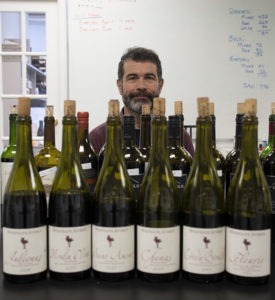
WineAlign founder Bryan McCaw.
The principal critics are a diverse group: Master Sommelier John Szabo; veteran wine critic David Lawrason; Steve Thurlow (who owns the wine education and communication business Wine for Life); educator and journalist Janet Dorozynski; spirits expert Margaret Swaine; Michael Godel (the most poetic wordsmith among the group); and consultant/educator/sommelier and principal partner with WineAlign, Sara d’Amato.
There are no critics among this group like James Suckling, handing out 95 ratings like candy, and there are no obscure ranking systems that factor in value but don’t actually tell you how good that particular bottle is.
Further, a score from WineAlign (and its French equivalent, Chacun Son Vin) is derived from the average rating of the combined panel, which theoretically protects against one panel member having an off day, or a particular type of palate from shaping a final rating.
What that all means is that if you see a score of 88 from this group, you can be assured it’s a rock-solid wine. As Lawrason contends, WineAlign is “the best vehicle yet created for comprehensive, democratic wine reviewing.”
While the company was founded upon the principle of delivering unadulterated truth in its Vintages Reports of new releases, it has grown to oversee Canadian wine awards, host seminars and winemaker dinners, curate by-the-case deliveries for wine lovers and, beginning later this month, to help match wineries around the world with wine agents in Quebec and Ontario.
Last week, I sat down with the company’s very forthright founder, Bryan McCaw, to talk about the past, present and future of WineAlign—sadly, without a glass in hand.
TheLushLife: Can you share the story of how this all got started?
Bryan McCaw: “I was a CEO of a publicly traded software company. I was basically doing Fintech 15-20 years ago—doing really innovative stuff like online lending and auctions. However, we got bought by a big company and I decided not to stay around. After we sold the company, I had enough money to pay off my mortgage. So I went over to the Royal Bank on the Kingsway to take care of the mortgage. And then I wanted to celebrate, so went right across the street to the LCBO and said, ‘I want an expensive Shiraz.’ They guy pulled out $100 Shiraz for me. I went home and opened it and thought, ‘This is not that good.’ I don’t remember who the wine reviewer was, but I felt like I’d gotten ripped off.
“At that time I was starting to get more into wine, although I was basically only drinking big reds—my palate has changed significantly; John (Szabo) teases me about how much I like white wines now. Anyway, I came to realize that the reviews at the LCBO are literally the best reviews they can find for that wine from anywhere in the world. But often the critics’ consensus (scores) of those wines is quite different. And, frankly, some of those scores are asinine. Consumers are being taken advantage of.
“So that’s when I had the idea of creating this concept of WineAlign—putting together a group of local wine critics who would review wines carried at the LCBO in order to help people find the best wines available there. I believe the consensus approach, with multiple educated palates, is a better approach then chasing a high score. You debase the system with overly high scores.
“So after paying off my mortgage, I used the money I had left over to start this company.”
So how has the business model changed over time?
“If someone had taken me aside 12 years ago and said, ‘Hey Bryan, so you’re going to start a business based on getting advertising from wineries and agencies, and then you’re going to go out and slag major brands, while asking them for money? Are you stupid?’ Fortunately—or unfortunately—nobody said that to me. So, while the advertising model drove our model for years, the percentage of our business revenue that comes from advertising has dropped precipitously over the past three or four years.”
Even digital advertising?
“There are some brands out there that are very well financed, but the wines aren’t necessarily loved by critics. And if you say you don’t love their wines enough times, the agency will say, ‘Why the %$#& would I advertise with you?’ Which I understand. I actually had an agent tell me, ‘If my wines don’t get a 90, it’s hurting my brand.’
“So the advertising-based business model was flawed. Four years ago we pivoted and started the Exchange program. It took us over a year to figure out and design a system that allowed consumers to receive mixed cases legally. The Exchange is a service that taps into the world of wines beyond the retail stores and delivers a curated, mixed case of top-quality wines directly to your door. We work with top Ontario wine agencies to taste through their import portfolios and find jewels for your Exchange subscription. All the wines are 90+ points and have been carefully chosen by our panel for their quality and value. Every quarter, roughly 1,000 people are getting a curated case of wine from us. We get a small commission from agents for wine that passes through us. We feel it has been successful and is continuing to grow.”
Of course, you’re battling a 600-pound gorilla for ad dollars.
“The LCBO is designed to suck every advertising dollar out of the marketplace, and we get the table scraps. Of course, a good way to get listed at the LCBO is to advertise with them.”
“So we had a hammer, and the entire world was nails.”
I expect 2020 must have been a challenging year.
“So last March, I was skiing at Big White (south of Kelowna) with my family. The resort said they would be staying open, despite the COVID outbreak. They got shut down after our first day. As I was sitting in the Edmonton airport on the way home, I said, ‘My business is over.’ Our three biggest revenue sources were the Vintages Reports (Vintages tastings were shut down), wine events (we had eight cancel in two-day period), and our national wine awards (which weren’t going to happen). Our office manager, Sarah, thought she was going to have to look for another job. But we had the Exchange program and the complex software we wrote for it. And that was before wine agents could do mixed cases. So we had a hammer, and the entire world was nails. Most of the major wine agents in the province started doing business with us and started selling mixed cases to their database. In April alone we sold like 3,000 cases of wine. Last spring is a blur. I worked every single day for almost three months to try to keep up.
“If you talk to most of the top agents in town, they had a pretty good year last year, but they all worked a lot harder. Instead of selling 20 cases to one restaurant, they sold 20 cases to 20 different individuals.”
Then the LCBO started selling mixed cases to consumers.
“The critics I work with understood that this was part of doing business at the time, and we helped out a lot of agents. However, our team was never comfortable putting agency cases through our system, because it had that halo of WineAlign—that these were curated and approved by us, when, in fact, they weren’t. And so we were okay pulling away from that sort of business after a few months.”
And you managed to do a national wine awards, in a manner of speaking.
“We did a big tasting of Canadian wines in the fall in lieu of our awards that was very successful. We had like 900 wines comes through that we tasted over six weeks. We moved to a larger office with air filtration so that we could have people spread out.”
And you recently launched the new Buy a Case consumer program.
Like you, my inbox gets inundated with daily offers from agencies and wine purveyors—including 97-point, $20 wines from (wine critic) Luca Maroni, and ridiculous stuff like that. So the next logical step from the Exchange program was to have some of the agents send us their consignment wines—wines not available at the LCBO—and taste through them, and every couple of weeks we will send an email with a few recommendations in it. This is the best of the best private import wines available to you to buy by the full case. We did our first one in early March and it was successful.
“Another thing we’ve been doing are the ‘Think You Know Wine’ blind tastings with our critics on Saturday evenings. Unfortunately, a $20 red blend can sometimes be hard to distinguish. But the dissertation of where they are going with the wines and their choices is something people find fascinating. I get emails daily from people who love what we’re doing. I think it’s a real way to bond with people during this time.”
Do you find it frustrating when you walk through the LCBO and see other wine critics highlighted, because they marked a wine higher than you did?
“We argue that all wine scoring is relative, and that an 88 from us is the equivalent of a 97 from Luca Maroni. But the reality is that the highest score gets published.
“There are critics in this country who get more publicity because they score high. It’s self-reinforcing. I was walking in the LCBO the other day and saw a 94-point sparkling wine from an Ontario winery. It’s a fine wine, but it’s not a 94-point wine. Value shouldn’t be part of the scoring equation.
“We don’t suffer from ‘score inflation.’ We score to help consumers—not to get published.”
You’ve noted that your ‘group scoring’ concept protects against outlier scores.
“I think anyone can have an off day and blow a review. Our approach provides checks and balances that eliminates the number of mistakes. Whereas if you were tasting on your own, you don’t have that feedback, that balance, that trust that we have with each other in this group. This is the same approach we take at the National Wine Awards, except they are tasting blind.”
So what do you think of the practice of some wineries and agencies using social media influencers to market their wares?
“We’ve done very careful tracking on a couple major projects working with multiple social media influencers who all had over 10,000 followers. Based on the number of sales generated from their Instagram accounts, I thought that our tracking software was busted and not working—but it was working fine.
“I’ve talked to a couple of agents who say this is all fluff. When you ‘like’ the Instagram post, you get a dopamine hit from it. You feel good doing it. But it doesn’t mean you’re going to buy the wine.
“Let me be clear—there are definitely a few good, wine-focused, social media influencers out there. However, I’ve been told that buying Instagram followers is a very common practice. I was also surprised to find out that you can also buy YouTube views.”
How big is your database?
“We have a database of over 140,000, and we get about one million unique visitors every year.”
So what’s next for WineAlign?
“We’re actually launching a new business this month, Market Matcher. It’s a B2B play. For all of our bitching about the LCBO and SAQ and how difficult they are to deal with, from a global perspective getting your wines into the Ontario or Quebec marketplace is a very good thing. Once you get in, they pay their bills, they are professional and it’s a lucrative market. It’s like a vacation where the journey is awful, but once you get there the resort is great. With the tariff situation in the U.S. vis-à-vis wines from Europe, the UK going through the Brexit stuff, the Chinese being ‘difficult’ when it comes to wine and stuff, and the suspension of tradeshows like ProWein and VinItaly, there is a real need to try to connect wineries and agencies.
“So, we are creating a dating service, for lack of a better phrase, between wineries from around the world and agents in Quebec and Ontario. The winery will send samples to WineAlign and we will review those wines, put them up on a special website, and then agents can have a look. If they like the reviews and winery, they can start dating.
“We have shared this idea with several regional associations and the response has been great. I’m pretty excited about this.”
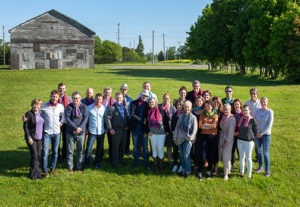
Judges and administration staff at the 2019 WineAlign National Wine Awards in Wellington, Ontario.
Do you expect to conduct a 2021 WineAlign National Awards?
“Yes—in Penticton, B.C. in October. It gives us lots of time to get vaccinated. Nobody will be able to participate who has not been vaccinated. But I’m looking forward to it. In all sincerity, getting to meet all these wonderful people who help judge and are part of this industry—to experience of camaraderie and professionalism of these folks—is pretty special.”
Have you been able to take advantage of your position? Any special travel junkets or parties?
“Since I have been in this business, I have actually never travelled to any international wine regions. For example, I’ve never even been to Italy.
“But we had a Penfold Grange tasting here earlier this year, which was, like, wow! And our Christmas parties are pretty epic. And the dinners at the national wine awards have been amazing.”
So at least you’ve gotten around Canada a bit. Do you have a favourite region, from a wine perspective?
“I love all Canadian wines, but what is going on in B.C. is impressive. Unfortunately in Ontario we don’t get to experience a lot of the quality of B.C. wines. Part of that is because of Ontario trade barriers. And part is because many of those wines sell out; most B.C. wineries ship direct to the customer, which we facilitate. And they have a climactic advantage over the rest of the country when it comes to ripening big red wines. I’m personally a fan of the Okanagan Valley. Cabernet Francs and top-tier red blends are two of my favourites. I think when I retire, I want to live the Okanagan—ski in the winter, visit wineries and drink wine all year.”
Okay, here’s a question everyone wants answered: What do you do with all the bottles after reviews?
“We’ll do a tasting day of, say, 30 to 50 bottles of wine. At the end of the day, it’s ‘Do you wanna take a bottle of wine home?’ There could be six or eight that are excellent. It’s an occupational hazard.”
It must be good to be your neighbour.
“Yes, it’s my only redeeming quality. But this is one thing you don’t understand until you get into the industry—the amount of wine you pour down the drain. People say never throw it away, but the reality is that we dump 99% of the opened bottles.”
So, I take it you don’t regret starting WineAlign?
“I love the industry—how could you not? I work with a gifted group of professionals and we take our objectivity very seriously—to our financial detriment. And I’m proud that we’ve created jobs and helped people make a fair living during the pandemic. So, yes, I’m happy in the bed I’ve made.
“What we do is an imperfect process, but it’s the best process that we have.”
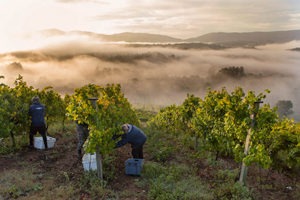
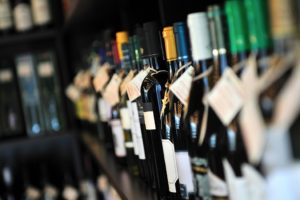
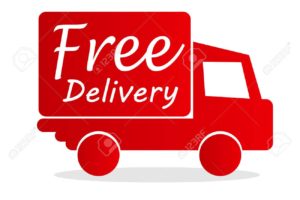
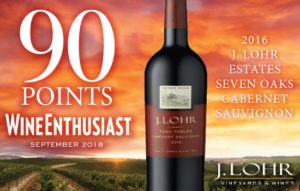
9 Comments
Leave your reply.